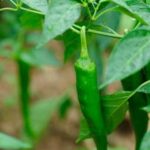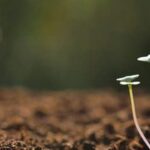North Texas vegetable gardening offers a unique set of challenges and opportunities for gardeners due to its specific climate and soil conditions. With the right knowledge and techniques, you can cultivate a thriving vegetable garden in this region. Understanding the nuances of North Texas’ climate and soil is essential for successful gardening.
The North Texas climate is characterized by hot summers, mild winters, and low precipitation, creating a challenging environment for growing vegetables. Additionally, the soil in this region tends to be heavy clay with poor drainage, posing further obstacles for gardeners. However, with proper planning and care, it is possible to overcome these challenges and enjoy bountiful harvests.
In this comprehensive guide to North Texas vegetable gardening, we will explore the best vegetables to grow in this region, offer tips for planning your garden layout and location, provide a month-by-month gardening calendar, discuss pest management strategies, offer advice on watering and irrigation techniques, delve into organic gardening practices, and share success stories from seasoned gardeners.
Whether you are new to gardening or looking to improve your skills in North Texas, this article aims to equip you with the knowledge needed for a successful vegetable garden in this unique region.
Best Vegetables to Grow in North Texas
When it comes to North Texas vegetable gardening, choosing the right vegetables to grow can make all the difference. Fortunately, there are several vegetables that thrive in the unique climate and soil of North Texas. Whether you’re a beginner or an experienced gardener, here is a comprehensive list of vegetables that are well-suited for North Texas gardens:
- Tomatoes: Varieties such as Celebrity, Heatwave, and Juliet are well-adapted to the hot and humid summers of North Texas.
- Peppers: Bell peppers, jalapeños, and poblano peppers are excellent choices for North Texas gardens, as they require minimal maintenance and produce prolifically in the warm weather.
- Squash: Zucchini, yellow squash, and butternut squash thrive in the rich soil and ample sunlight of North Texas. They are also relatively resistant to common garden pests in the region.
- Okra: Known for its ability to withstand high temperatures and drought conditions, okra is a must-have for any North Texas vegetable garden.
In addition to these vegetables, other suitable options for North Texas vegetable gardening include onions, garlic, cucumbers, green beans, and sweet potatoes. By choosing these varieties, you can ensure a bountiful harvest while minimizing the challenges that come with growing in the North Texas climate.
When planning your vegetable garden in North Texas, it’s essential to consider factors such as temperature fluctuations and water availability. Selecting vegetables that are well-suited to the region’s specific conditions will set you up for success and make your gardening experience more rewarding.
Planning Your North Texas Vegetable Garden
When planning your North Texas vegetable garden, it’s important to consider the unique climate and soil conditions of the region. North Texas has hot summers, mild winters, and clay soil, which can pose challenges for growing vegetables. However, with the right approach, you can create a successful vegetable garden in this area.
One of the first steps in planning your North Texas vegetable garden is choosing the right location. Vegetables generally require at least 6 hours of sunlight per day, so select a spot in your yard that receives adequate sun exposure. Additionally, consider factors such as proximity to water sources and protection from strong winds.
Once you’ve chosen a location, it’s time to prepare the soil. In North Texas, the clay soil can benefit from the addition of organic matter such as compost or aged manure to improve its drainage and fertility.
After choosing the location and preparing the soil for your North Texas vegetable garden, it’s important to design a layout that maximizes space and productivity. Consider factors such as plant spacing, companion planting, and crop rotation to make the most of your garden space while promoting healthy growth for your vegetables.
| North Texas Vegetable Gardening Tips | Data |
|---|---|
| Sunlight Needed | At least 6 hours per day |
| Soil Preparation | Add organic matter like compost or aged manure |
| Garden Layout Considerations | Plant spacing, companion planting, crop rotation |
North Texas Vegetable Gardening Calendar
Spring (March-May)
Spring in North Texas is the ideal time to start your vegetable garden. In March, you can start sowing seeds for warm-season vegetables such as tomatoes, peppers, squash, and cucumbers. As the weather warms up in April, you can also plant heat-loving crops like okra, sweet potatoes, and southern peas. By May, your spring vegetables should be thriving, and you can start harvesting early crops like radishes, lettuce, and spinach.
Summer (June-August)
The summer months in North Texas can be challenging for vegetable gardening due to the intense heat. However, with proper care and attention, you can still have a successful garden. In June, continue to harvest your spring vegetables while also planting heat-tolerant crops like melons, eggplant, and black-eyed peas.
Be sure to provide adequate water and use mulch to retain moisture in the soil. By July and August, you can look forward to harvesting summer favorites such as tomatoes, peppers, okra, and squash.
Fall (September-November)
Fall is a great time for North Texas vegetable gardening as the temperatures start to cool down. In September, you can still plant some warm-season vegetables for a fall harvest, such as beans and cucumbers. Additionally, it’s time to plant cool-season crops like broccoli, cauliflower, carrots, and kale. By October and November, you should be enjoying a bountiful harvest of both warm-season and cool-season vegetables before the winter frost sets in.
By following this month-by-month guide for sowing, planting, and harvesting in North Texas vegetable gardening calendar,you’ll be able to enjoy fresh produce from your garden throughout the year.
Dealing With North Texas Garden Pests
Identifying Common Pests
In North Texas, vegetable gardens are often affected by a range of pests and insects. Some common pests to look out for include aphids, cabbage loopers, squash bugs, and spider mites. These pests can cause damage to your plants by feeding on the foliage, flowers, or fruit. It is important to regularly inspect your garden for any signs of pest infestations so that you can take action before they cause significant damage.
Managing Pest Infestations
There are several methods for managing pest infestations in your North Texas vegetable garden. One approach is to encourage natural predators such as ladybugs and lacewings that feed on garden pests. Additionally, handpicking larger pests like caterpillars or using a strong stream of water to dislodge them from your plants can be effective. For more severe infestations, consider using organic pest control products such as neem oil or insecticidal soaps that can target specific pests without harming beneficial insects.
Preventative Measures
To prevent pest infestations in your North Texas vegetable garden, it is important to practice good garden hygiene. Removing plant debris and weeds can help eliminate hiding spots for pests and reduce the likelihood of infestations. You can also use floating row covers to protect your plants from common pests like aphids and caterpillars.
Additionally, rotating your crops each year can help disrupt the lifecycle of certain pests and reduce their impact on your garden. By incorporating these preventative measures into your gardening practices, you can minimize the risk of pest problems and enjoy a thriving vegetable garden in North Texas.
By being proactive in identifying and managing common pests in your North Texas vegetable garden, you can maintain healthy plants and maximize your harvest throughout the growing season.
Watering and Irrigation in North Texas Vegetable Gardens
When it comes to North Texas vegetable gardening, one of the biggest challenges that gardeners face is the scorching heat and limited water supply. However, with the right watering and irrigation strategies, you can conserve water and keep your garden hydrated throughout the hot Texas summer. Here are some effective strategies for watering and irrigation in North Texas vegetable gardens:
- Use Drip Irrigation: Drip irrigation is a highly efficient way to water your vegetable garden in North Texas. By delivering small amounts of water directly to the root zone of plants, drip irrigation minimizes evaporation and ensures that water is used where it is needed most.
- Mulch: Applying a thick layer of organic mulch around your vegetable plants helps to retain soil moisture, reduce evaporation, and keep roots cool in the high temperatures of North Texas. Mulching also prevents weed growth, which can compete with your vegetables for water.
- Watering Schedule: In North Texas, it’s important to establish a consistent watering schedule for your vegetable garden. Water deeply and less frequently to encourage deep root growth and avoid shallow watering that promotes surface evaporation.
In addition to these strategies, consider investing in a rain barrel or other water collection system to capture rainwater for use in your North Texas vegetable garden. Implementing these watering and irrigation practices will not only help you conserve precious water resources but also ensure that your vegetables thrive despite the challenging environmental conditions.
Overall, mastering the art of watering and irrigation is crucial for successful North Texas vegetable gardening. By incorporating these strategies into your gardening routine, you can enjoy bountiful harvests while being mindful of water conservation efforts in this region.
Organic North Texas Vegetable Gardening
When it comes to North Texas vegetable gardening, many gardeners choose to take the organic route, avoiding the use of synthetic chemicals and pesticides. By doing so, they prioritize the health and well-being of both their families and the environment. Organic gardening in North Texas involves utilizing natural methods for pest control, soil enrichment, and plant nutrition.
One of the key strategies for organic North Texas vegetable gardening is building healthy soil. This can be achieved by adding compost, manure, and other organic matter to the soil to improve its structure and fertility. Healthy soil leads to healthier plants that are more resistant to pests and diseases, reducing the need for chemical interventions. Additionally, crop rotation and cover cropping are essential practices that help maintain soil health in an organic garden.
Another important aspect of organic North Texas vegetable gardening is pest management. Rather than relying on synthetic pesticides, organic gardeners use a combination of cultural practices (such as companion planting), biological controls (like introducing beneficial insects), and physical barriers (such as row covers) to keep pests at bay. By working with nature rather than against it, organic gardeners can effectively minimize damage from common pests while maintaining a toxin-free environment.
Furthermore, organic gardening in North Texas also involves using natural methods to promote plant growth and resilience. This may include utilizing homemade compost teas or other natural fertilizers to provide plants with the essential nutrients they need without resorting to chemical fertilizers. Additionally, practices such as mulching can help conserve moisture in the soil, suppress weeds, and regulate soil temperature-all without the use of synthetic materials.
| Aspect | Key Strategy |
|---|---|
| Soil Health | Adding compost and organic matter |
| Pest Management | Utilizing cultural practices and biological controls |
| Plant Growth | Using natural fertilizers and mulching |
Success Stories
In conclusion, North Texas vegetable gardening presents unique challenges and opportunities for gardeners. From understanding the climate and soil conditions to choosing the right vegetables and managing pests, there are many factors to consider when creating a successful vegetable garden in this region. However, with careful planning and the right techniques, it is possible to cultivate a thriving garden that can yield bountiful harvests throughout the year.
The success stories shared by experienced North Texas vegetable gardeners serve as inspiration for those looking to start their own gardens. These real-life examples offer valuable lessons learned from their experiences, including tips for overcoming challenges such as extreme temperatures, pests, and water conservation. By learning from the successes and failures of others, new gardeners can develop a deeper understanding of what it takes to create a flourishing vegetable garden in North Texas.
As interest in sustainable living and organic produce continues to grow, more people are turning to north Texas vegetable gardening as a way to connect with nature and produce their own food. By following the advice and experiences of seasoned North Texas gardeners, beginners can gain confidence in their ability to successfully grow a wide variety of vegetables in this unique climate.
With dedication and perseverance, anyone can enjoy the rewards of growing their own fresh, nutritious produce right in their own backyard.
Frequently Asked Questions
What Are the Best Vegetables to Grow in North Texas?
The best vegetables to grow in North Texas are those that can tolerate hot temperatures and thrive in the region’s soil. Some popular options include tomatoes, peppers, okra, squash, and sweet potatoes. These vegetables are well-suited to the climate and growing conditions of North Texas.
What Vegetables Tolerate Texas Heat?
Many vegetables tolerate the heat in Texas, making it possible to have a successful garden even in the sweltering summer months. Some heat-tolerant vegetables include black-eyed peas, Southern peas, melons, sweet potatoes, okra, and peppers. These vegetables can withstand the high temperatures and still produce a bountiful harvest.
What Month Do You Plant Vegetables in Texas?
In Texas, the best month to plant vegetables varies depending on the region within the state. Generally, however, many vegetables are planted in early spring as soon as the threat of frost has passed.
This is typically around March or April for most areas of Texas. Additionally, some crops can also be planted in late summer or fall for a second harvest before winter sets in.

If you’re looking to get into vegetable gardening, or are just looking for some tips on how to make your current garden better, then you’ve come to the right place! My name is Ethel and I have been gardening for years. In this blog, I’m going to share with you some of my best tips on how to create a successful vegetable garden.





